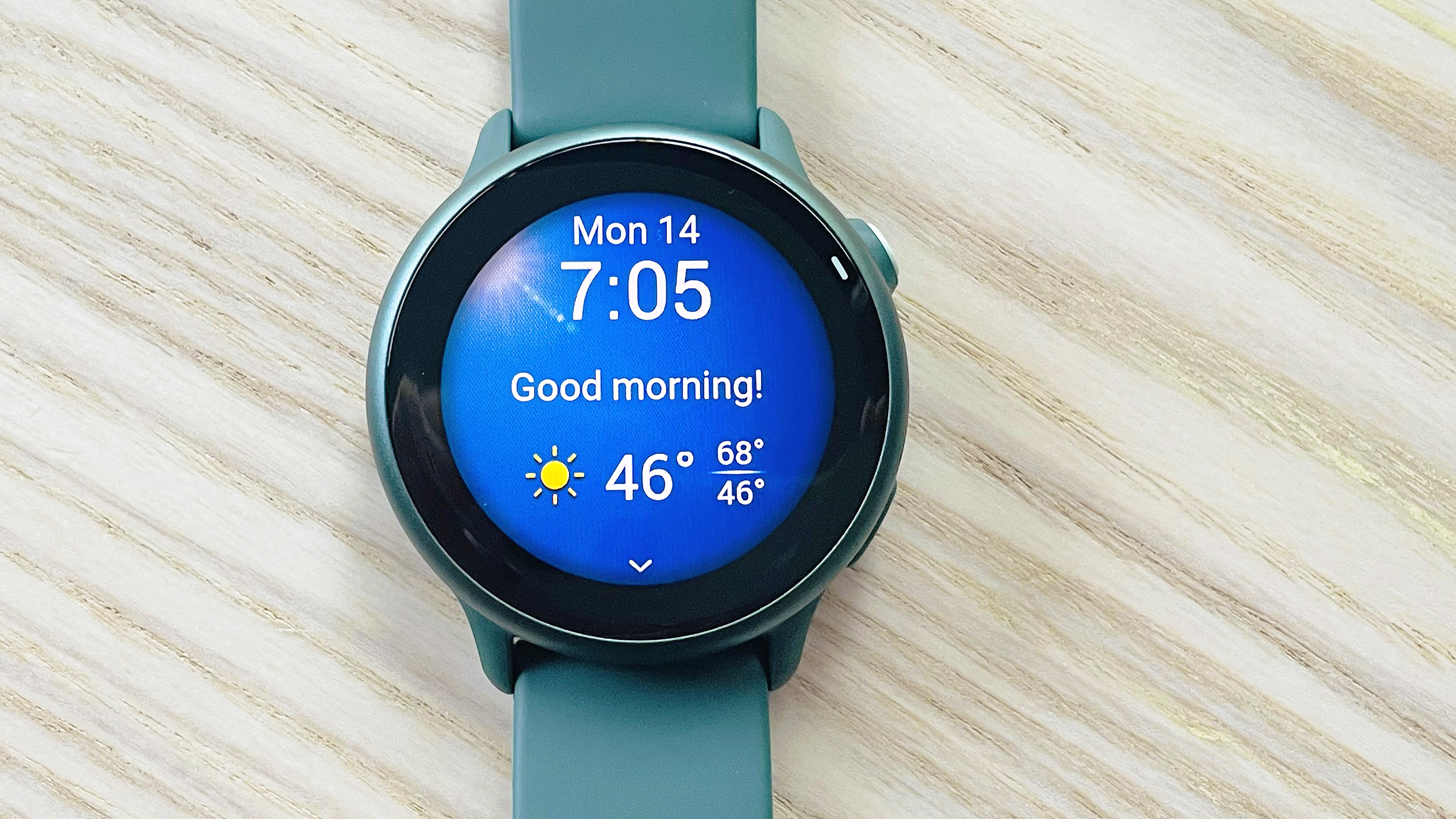Galaxy S7 vs LG G5: Which Android Flagship Reigns Supreme?
The Galaxy S7 improves upon a winning formula, while the LG G5 tried to reinvent the smartphone with its modular design. We compare the two titans in multiple categories.
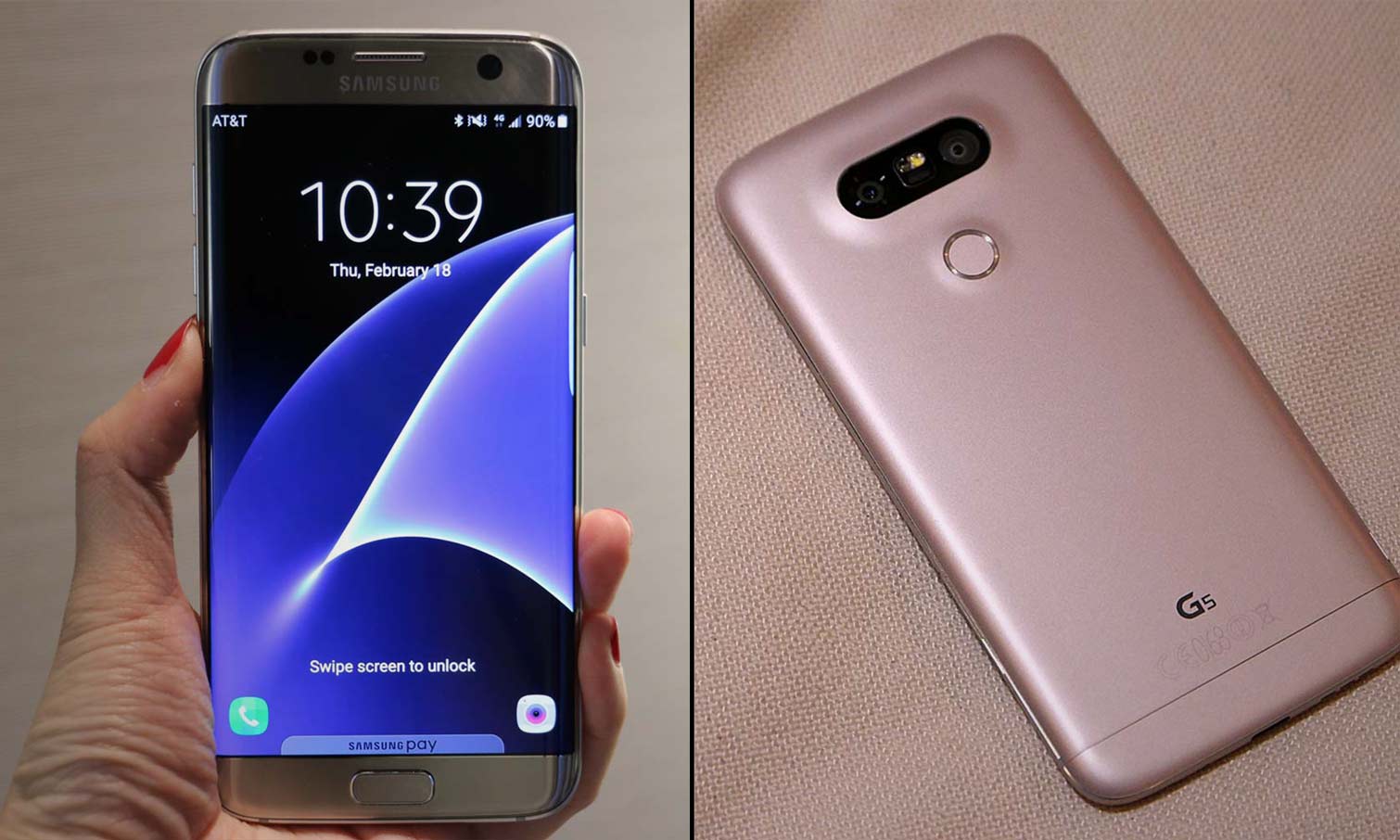
The battle of the Android titans has begun. Stepping into the ring with a stronger, improved Galaxy is crowd-favorite Samsung, whose Galaxy S7 boasts a water-resistant design and a new dual-pixel camera. In the other corner is the innovative LG G5, which sports a modular design that lets you swap in goodies like a camera grip with extended battery.
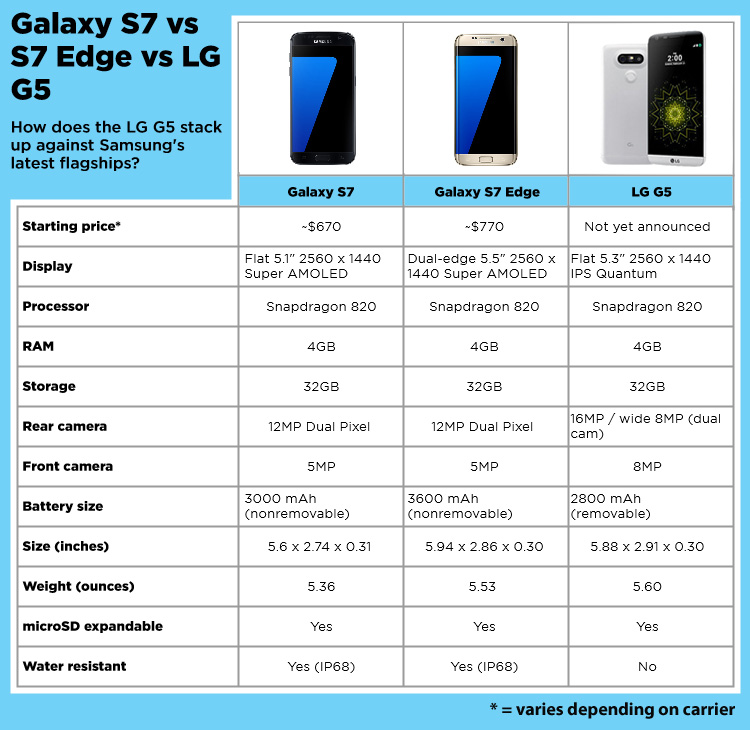
We compare these latest flagships based on our initial impressions, as well as features and specs, to see if Samsung or LG has the edge. Once we review the devices, we'll update this story with test results and a more detailed breakdown.
Special Features: LG's Modularity vs Samsung's Water Resistance
The G5's modular design lets you eject the bottom portion of the phone with the push of a button, and swap in a different module to expand the phone's capabilities.
The Cam Plus add-on serves as a camera grip when latched onto the G5's base, and features dedicated shutter and video buttons, as well as a scroll wheel for zoom. Cam Plus also adds a 1,200-mAh battery to boost the one already inserted in the G5. At launch, LG will also offer a Hi-Fi Plus module, which adds a digital-to-analog converter to the phone for improved audio processing.
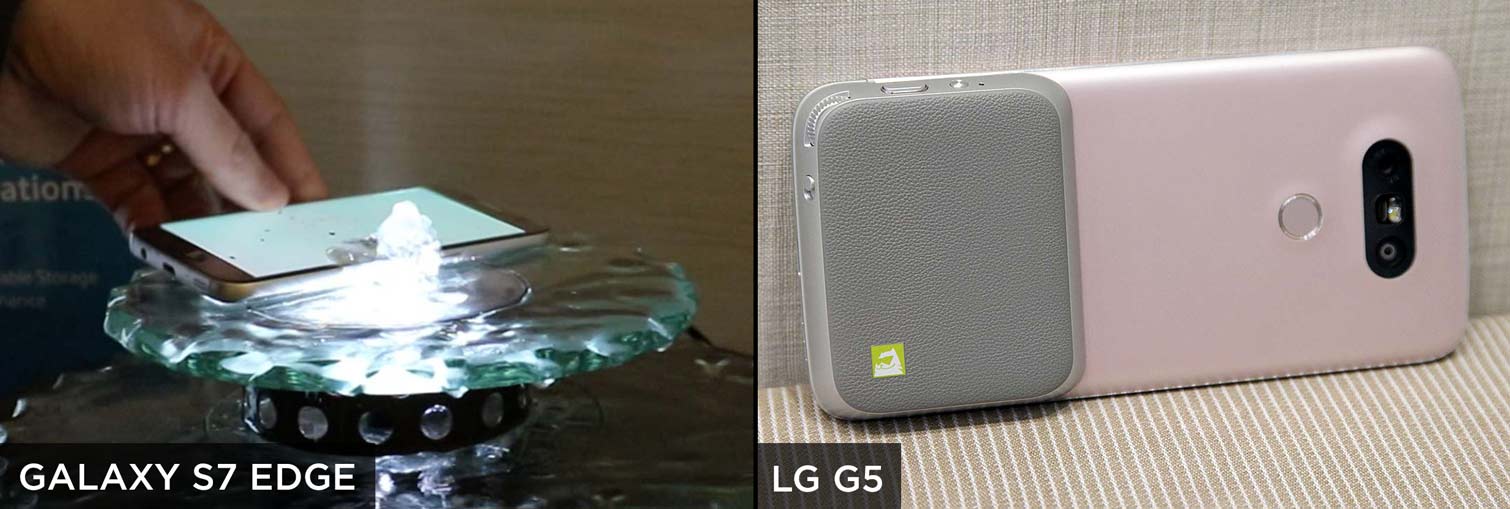
Samsung's stand-out feature for the S7 is its water resistance. The phone can withstand being submerged in 5 feet of water for 30 minutes. Plus, you don't have to worry about any annoying port flaps, as you did on the Galaxy S5.
On the more premium S7 Edge, Samsung has been working on refining its existing novelty feature: the curved, dual-edge display. This year's Edge sees improved use of the screens, with more functions and apps being able to make use of the space.
You'll not only get twice the Edge screen size available for use, but a far wider multitude of apps as well, since any Android widget can be placed on the Edge. Samsung also lets you set custom actions as shortcuts on the Edge, such as dialing a specific number or posting a Facebook status, which is super handy.
WINNER: LG G5. Although we'd like to see more module options, the G5's expandability makes it more exciting than the S7.
Cameras: Samsung's Dual Pixel Sensor vs LG's Dual Cameras
By bringing DSLR-level autofocus tech to smartphones, Samsung really outdid itself. The Dual Pixel sensor on the Galaxy S7 and S7 Edge promise blazing fast autofocus, while bigger pixels and a wider aperture let in 90 percent more light than before. This translates to excellent low-light performance, and clearer, brighter shots in the day.
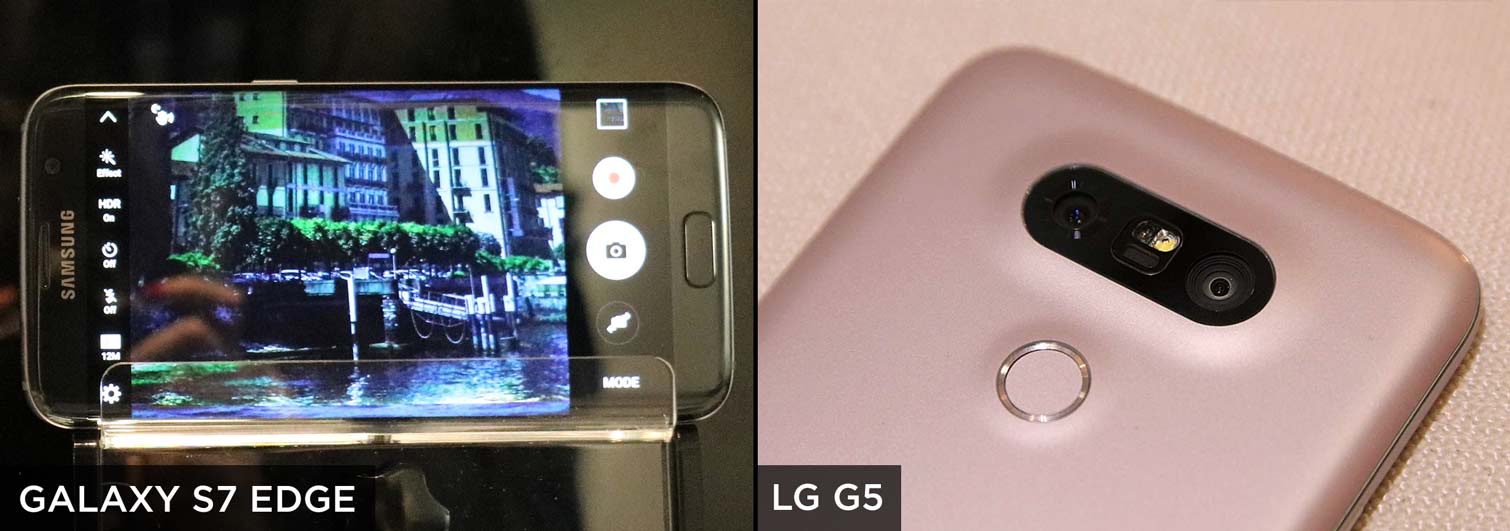
MORE: Galaxy S7 Could Be New Camera Phone King
The rear of the LG G5 houses two cameras - a 16-megapixel main shooter, and an 8-MP wide-angle (135-degree) one. You can toggle between the two, and the wider-angle camera lets you capture more of the environment.
WINNER: Galaxy S7 / S7 Edge. Based on our hands-on impressions versus the iPhone 6s Plus, the Galaxy S7 and S7 Edge look like they could be the smartphone cameras to beat.
Battery: LG's Removable Pack vs Samsung's Larger Capacities
The LG G5's 2800-mAh battery is smaller than the 3000-mAh and 3600-mAh ones in the S7 and S7 Edge respectively. However, only the LG's pack is removable. You can just pop in a fresh battery into the LG G5 to immediately get a 100 percent charge.
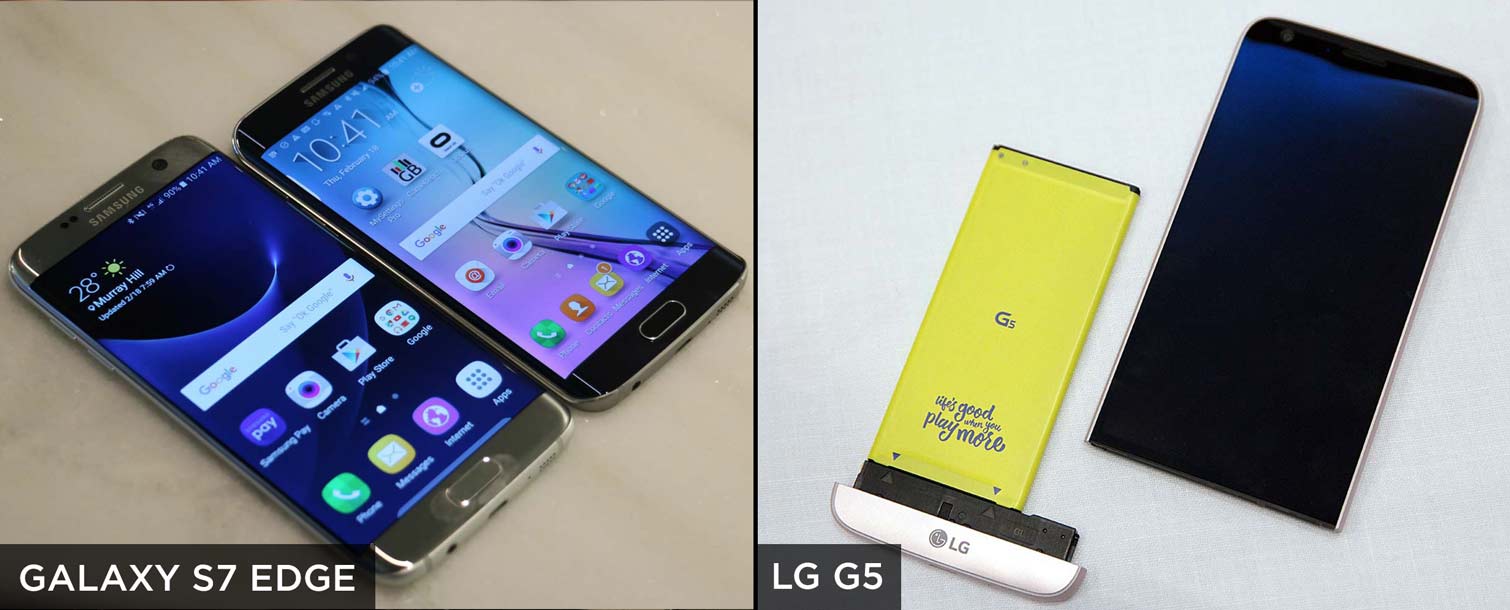
Still, the G5's smaller power pack potentially means shorter battery life. We still have to put all three devices to the test to see how long they last, since a larger battery does not guarantee more endurance.
WINNER: Draw (for now). At this stage, it's a tie between LG and Samsung pending our tests, but in general we prefer more capacity.
Display: AMOLED vs Quantum
Until we get all the devices in and compare them side by side, it's hard to pick a winner in the display round. What we do know is that all three handsets have the same display resolution (2560 x 1440), and that Samsung uses Super AMOLED for its screens, while LG has an IPS LCD panel. AMOLED displays tend to have deeper blacks than IPS, as well as richer colors, but can also suck up more power (depending on the content you're consuming).
LG says the G5's screen can go up to a scorching 900 nits of brightness, whereas Samsung has made no claims on the Galaxy S7's brightness. The G5's luminosity can make it much easier to see in direct sunlight.
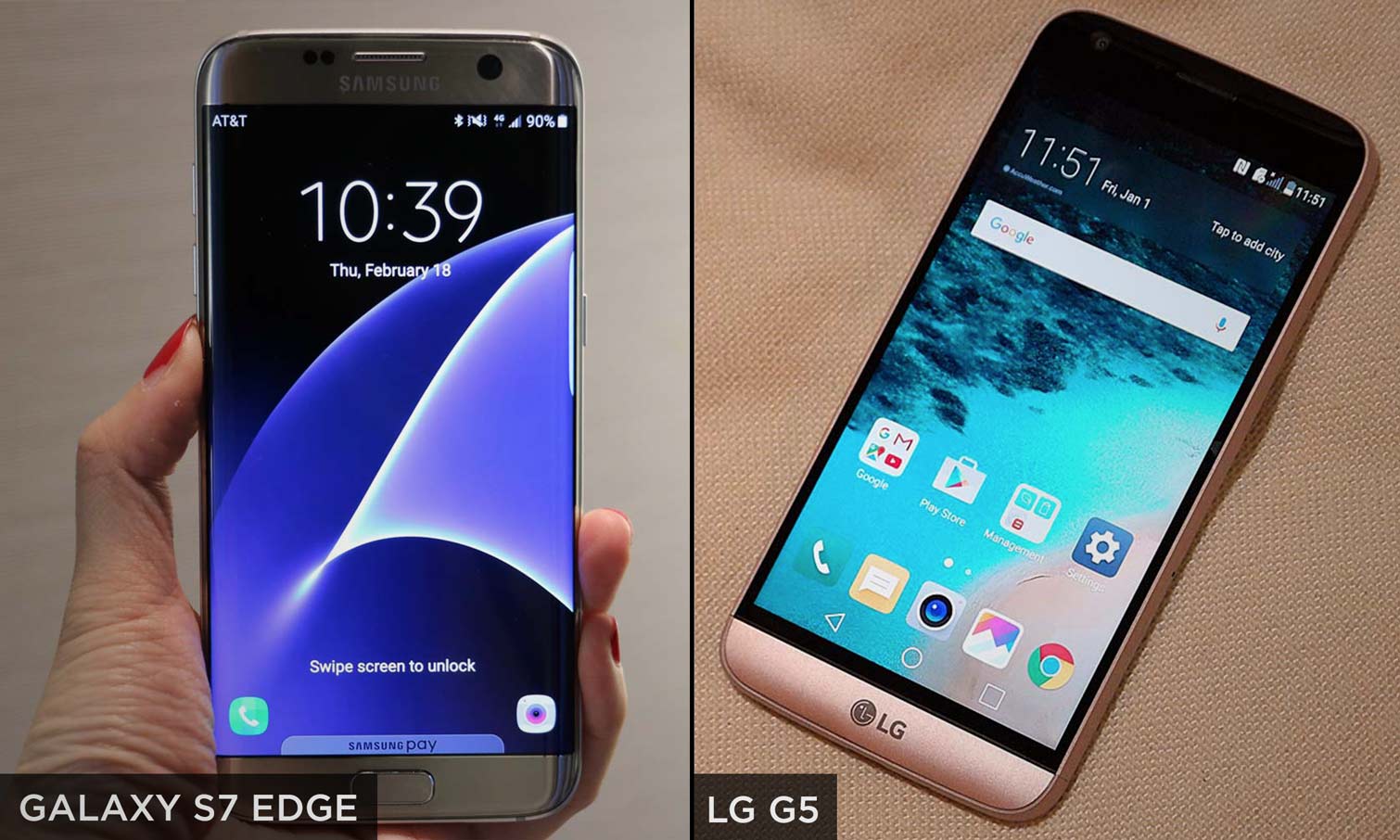
Both Samsung and LG have added always-on display features to their new flagships. Samsung's version is a full-color system that sips juice at 1 percent of battery life per hour, and can show your calendar, customized wallpaper or simply the time and notifications. LG's appears to be a monochrome setup that can only show the time and your alerts.
We are not considering screen size in this round, since the determining factor is personal preference. Samsung has squeezed a fairly large 5.5-inch display into the svelte S7 Edge, and a 5.1-inch panel on the S7. The LG G5's 5-3-inch face sits squarely in between the two S7s.
WINNER: Galaxy S7 / S7 Edge. Samsung has a slight edge over LG with its richer AMOLED panel, more useful Always On Display and dual curved edges on the S7 Edge.
Specs: Basically the Same
Both companies utilize the same Snapdragon 820 chip to power their flagships, and offer 4GB of RAM for multitasking prowess. The new flagships all support microSD storage expansion, and while the LG G5 is the heaviest phone, it only outweighs the Galaxy's slightly.
WINNER: Draw (for now). We'll have to see how these components translate to performance.
Accessories: Quality Over Quantity
Both LG and Samsung are launching accessories to accompany their phones. While Samsung is keeping things simple with the new Gear 360 VR camera and Gear VR, LG went all out with a whole new LG Friends line. The Friends accessories include the 360 Cam for taking immersive photos, 360 VR headset, Rolling Bot camera ball and a drone controller.
But it looks like LG bit off more than it can chew. The LG 360 VR headset apparently has problems with light leaking and tethers you to the G5 via a direct wire. Gizmodo said the LG headset "is way less immersive (and impressive than other headsets like the Gear VR."
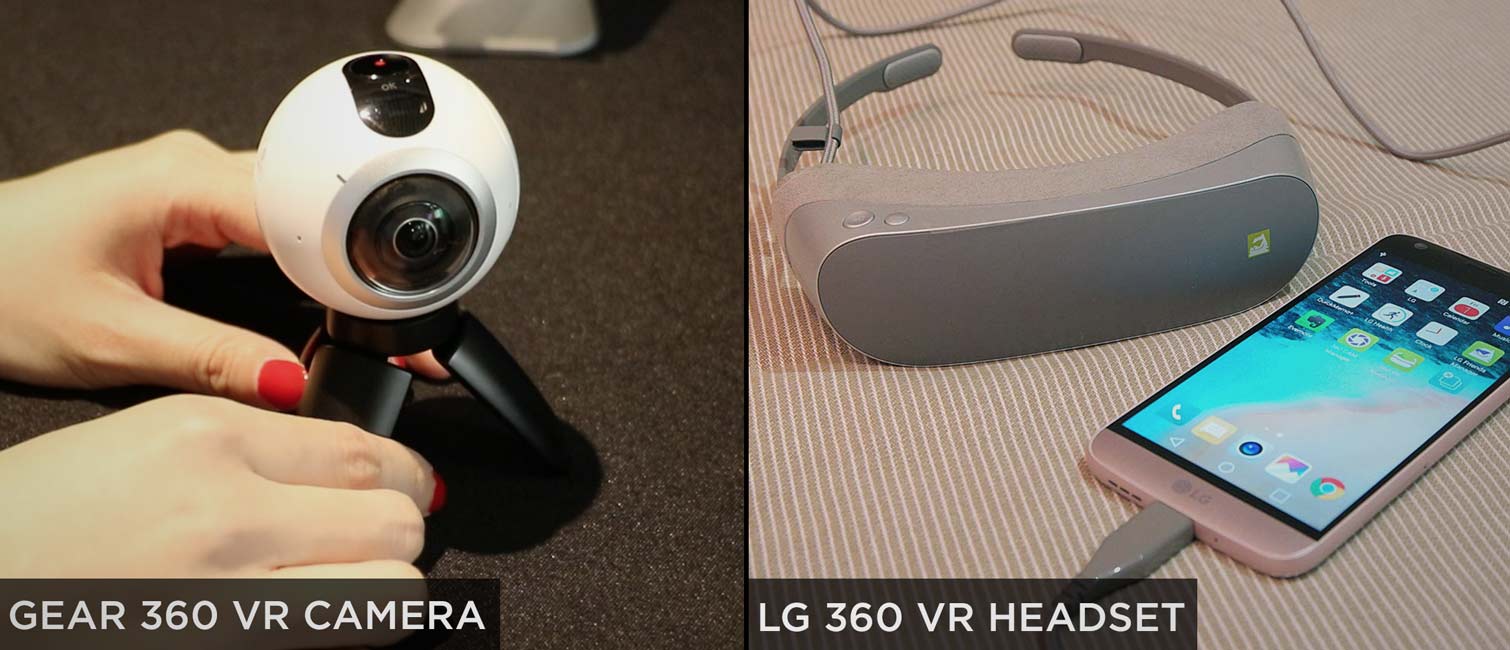
The Rolling Bot is a ball with a built-in camera and laser pointer that can be controlled and roll around your house to keep an eye on your kids or terrorize your pets. We've yet to try the Rolling Bot out.
Samsung's Gear VR, which comes included with every pre-ordered Galaxy S7 and S7 Edge, offers an immersive virtual reality experience, thanks to its partnership with industry pioneer Oculus. Based on our hands-on time with the Gear 360, Samsung's VR camera captures great high-res media and stitches that content together seamlessly.
WINNER: Samsung.While LG is to be applauded for its efforts in releasing creative new accessories, Samsung's VR headset looks to be far superior.
Bottom Line
Samsung takes an early lead in the battle of the Android titans. While the G5 raises the bar for phone innovation, the Galaxy S7 and S7 Edge improve on an already successful formula, bringing to consumers features that matter more, including a faster camera that takes better low-light pictures and a water-resistant body. Samsung also offers higher-quality accessories. Nevertheless, the LG G5 looks like a very strong Android phone for power users who want the ability to improve their device.
Sign up to get the BEST of Tom's Guide direct to your inbox.
Get instant access to breaking news, the hottest reviews, great deals and helpful tips.
Cherlynn is Deputy Editor, Reviews at Engadget and also leads the site's Google reporting. She graduated with a Master’s in Journalism from Columbia University before joining Tom's Guide and its sister site LaptopMag as a staff writer, where she covered wearables, cameras, laptops, computers and smartphones, among many other subjects.

